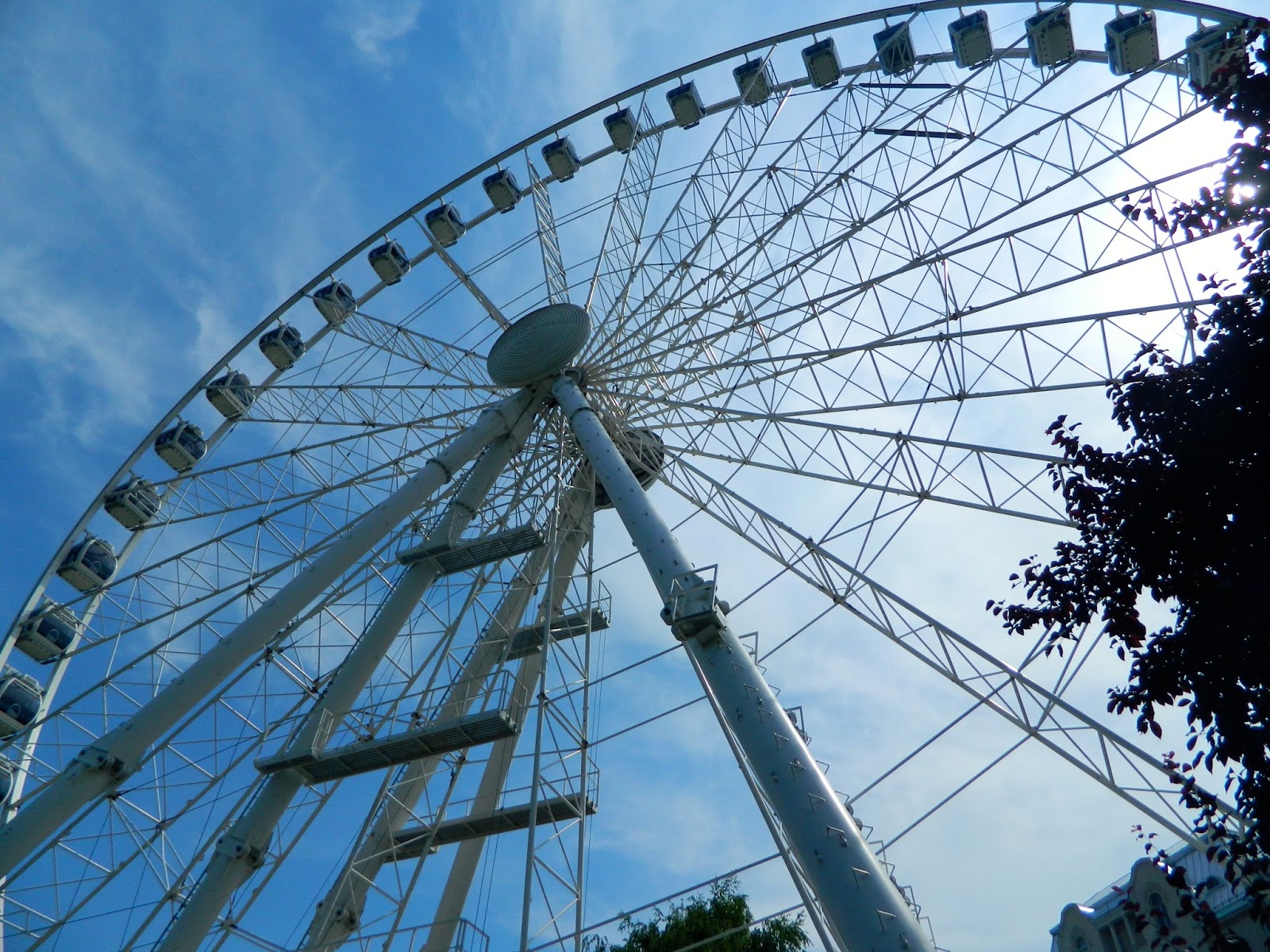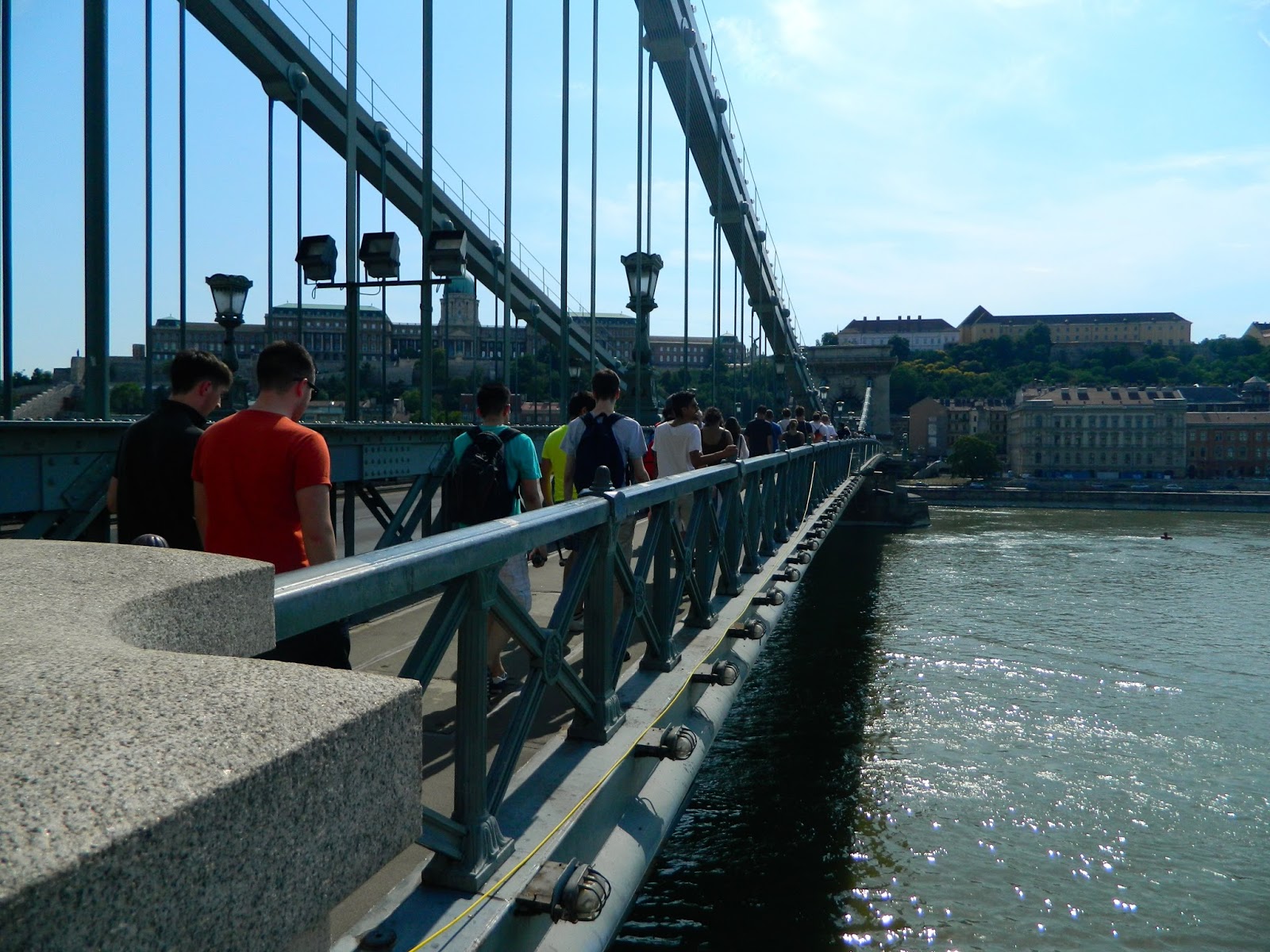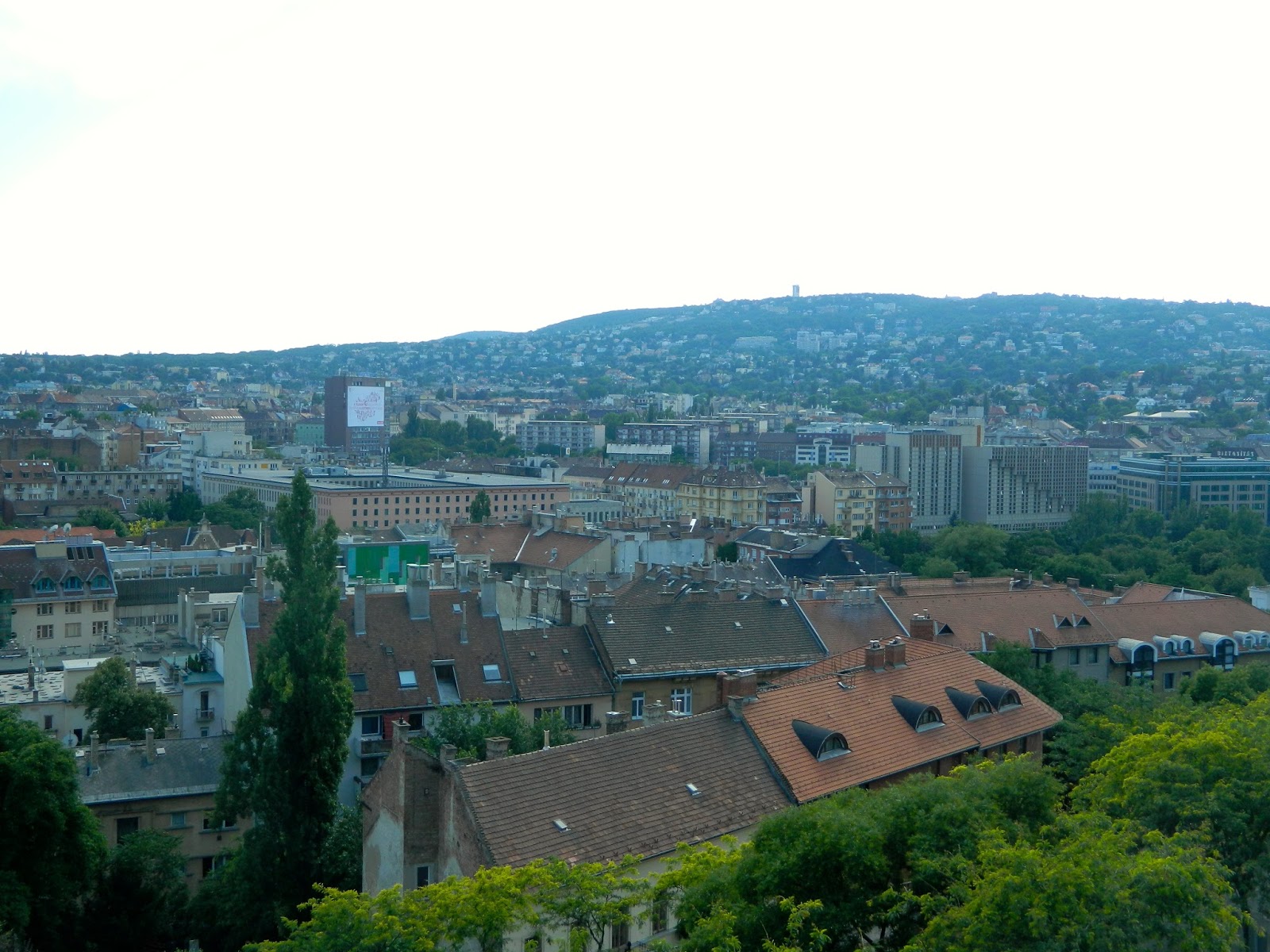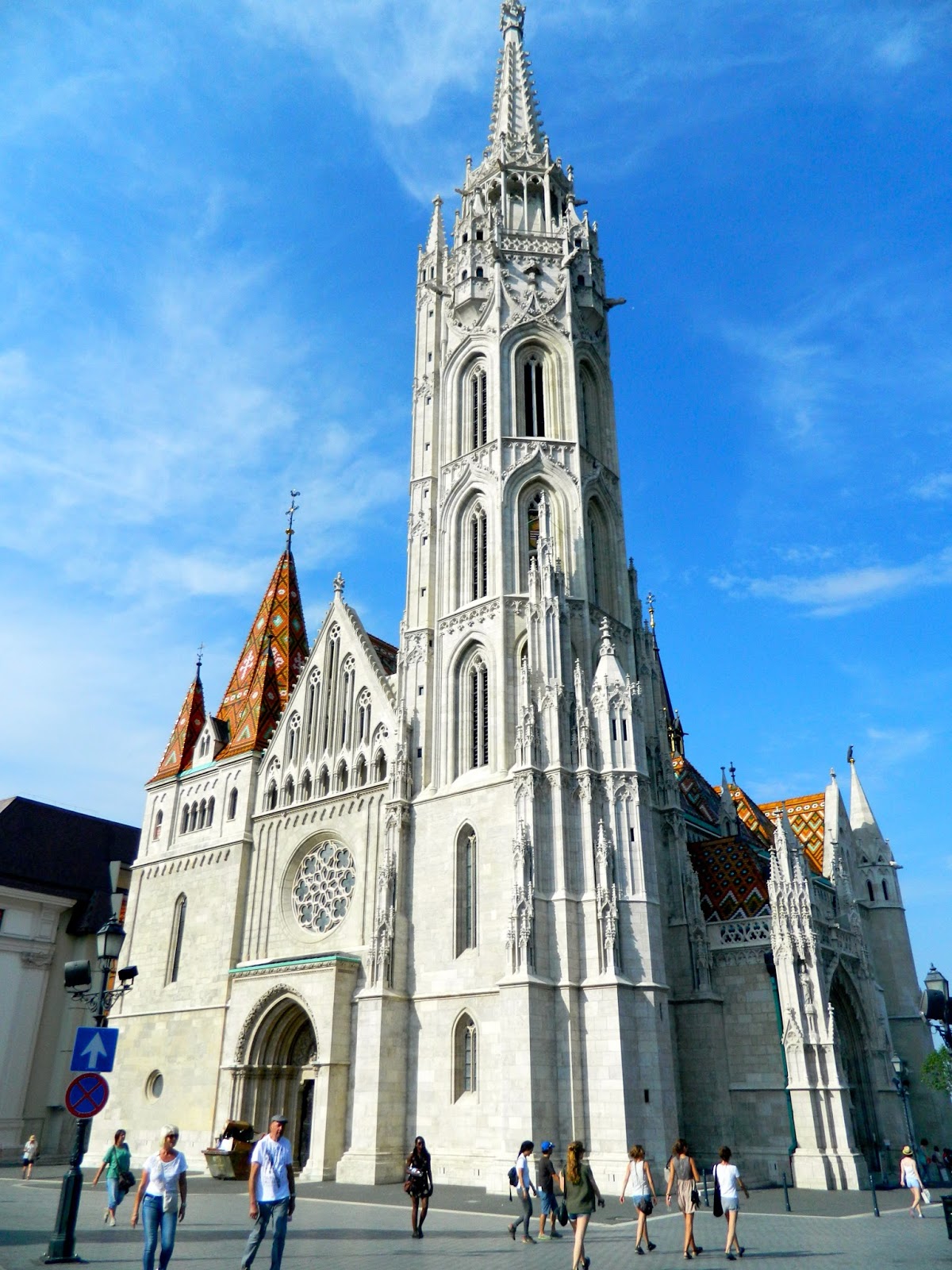Despite it being sacrilegiously hot in the Hungarian capital, I made myself go sightseeing and walk around. Again, free walking tours are a little cheesy, but they are great if you enjoy learning about architecture and not paying a cent (well, you should always give a tip to the guide). Sometimes, there is no better activity.

Along the way, I befriend three British girls with whom I later had some ice cream. Lovely bunch of ladies. We talked about the USA, UK, our education systems, geography (a field three out of the four or us are going into), and future travel plans. Solo traveling allows you to do this so much easier than in a group; you can just get ice cream with some strangers.
Though, I am starting to think there aren’t any British people left in England; they are the nationality I keep running into while travelling! Regardless, these girls were great company to struggle against the heat with.

Budapest, Buda and Pest, have had an active history since their creation(s). Hungary was first founded by seven tribes of central/western Asia, explaining the shamanistic practices in traditional Hungarian culture and the nation’s official non-Indo-European language. The capital city, unified in 1873, has faced natural disasters, the force of empires, the Mongols, numerous wars and bombings, and was eventually curtained by the Soviet Union until later gaining independence much in the way of the Czech Republic.
It is easy to see similarities between these two nations, the Czech Republic and Hungary. Though Hungary and in extension Budapest are largely idiosyncratic entities in Europe, both the Czech Republic and Hungary are only now getting the recognition and international intrigue they deserve. There is a certain stigma that surrounds everything that is past Germany and Austria; Budapest is anything but underdeveloped.
This is easily witnessed in its booming tourism industry, sporting an array of festivals every season and housing multiple cultural institutions from the national theatre to the Buda castle.

Buda and Pest were divided socio-economically and still in a way are. Buda is considered much more expensive to live in and houses the historic castle complex while Pest is slightly more affordable, boasts most of the city’s well known attractions and clubs. However, Pest is where the nation’s Parliament is located.
On a side note as a result of the world economic crisis, real estate in Budapest is very expensive now, and it is almost impossible to buy since everyone who owns anything here has to rent it out already … So, all you aspirant expats out there; good luck searching. However, the relationship between the two sides is not hostile whatsoever and never was. Both are frequently visited and lived in by tourists and Hungarians alike. They are simply just different.
*It is easy to recognise which side you are looking at by remember that Buda is ‘bumpy’ as it has the hills while Pest is like ‘a plain’ as it is flat.

As stated before, Hungary is a rather unique European nation. Historically, it has had Roman, Germanic, Slavic, and Turkish influences, but at its core, it is Uralic (the quintessence of the term ‘Eurasian’).
Splitting up from their fellow tribesmen and migrating from what is now a part of Russia centuries ago, Hungarians settled in the region known as the Carpathian Basin, which now encompasses most of the country as well as the edges of a few select Slavic nations like Slovakia and Croatia.
You still find traces of Hungary’s tribal past in its mythology and cultural heritage. Even the Pride festivities here include circle dancing/ shamanistic workshops (I may go to one exhibition).
Pictured below is the Turul, a scary looking vulture-falcon that is sacred in the Hungarian mythos. Divine, a precognitive messenger, and also apparently why the Hungarians are where they are today (the tribesmen followed the bird to the basin), the Turul graces the Buda castle and is still a symbol of nationalism and power for the government.

(Photo credits by PintsizedPioneer)
To be honest, I am more of a fan of the Pest side. It has the clubs, cheap places to eat since everything is more expensive in Buda that is in walking distance because of the castle, and is the home of the Jewish quarter, which I still have yet to see. Though, I am interested in exploring the cave systems on the Buda side. I need to look up the prices, but spelunking would be a cool (and I mean both definitions) activity on another one of these sun soaked days.

I may like the Pest side more, but the flatter district has a lot to compete with against this lovely building, the Matthias Church (see below). Though not its official name, it is known most to the public under this pseudonym. It is actually dedicated to the Virgin Mary, so it is Budapest’s Notre Dame, so to speak.
Built upon another smaller medieval church, constructed in the Romanesque style, later converted to a mosque when the Ottoman’s occupied the nation, and now back to a Roman Catholic establishment, it is very representative of Hungary’s history and culture. Little parts, pieces, and stones, turned over and changed, to create a mosaic of a country, but still completely individual without a category to fall into.

Next to the church lies the Fisherman’s Bastion, which is a magnificent place to get some candid pictures of the Pest side. You have to pay a small fee after six o’clock PM to enter a specific portion of it, but there are free walking areas 24/7 as well.
The Buda castle area, besides where they filmed Katy Perry’s “Firework” video, is great at sunset. There are many cute (but expensive) places to eat and the scenery couldn’t be better. I recommend spending the evening in Buda, but the night in Pest …
Solo travelling is going well. I will be in Croatia in a week though and I am so excited to see Nina (again) and go to a proper beach. I went to a “beach” here, which turned out to just be a large public pool complex; it was so hot, I didn’t care. I still need to see the Jewish district, possibly the caves of Buda, and do the thing I came here to do: Pride! I think I am the only person staying at the hostel for a week though. What a pity. I always like sticking around to see what is happening. Stay tuned! We still need to try goulash!